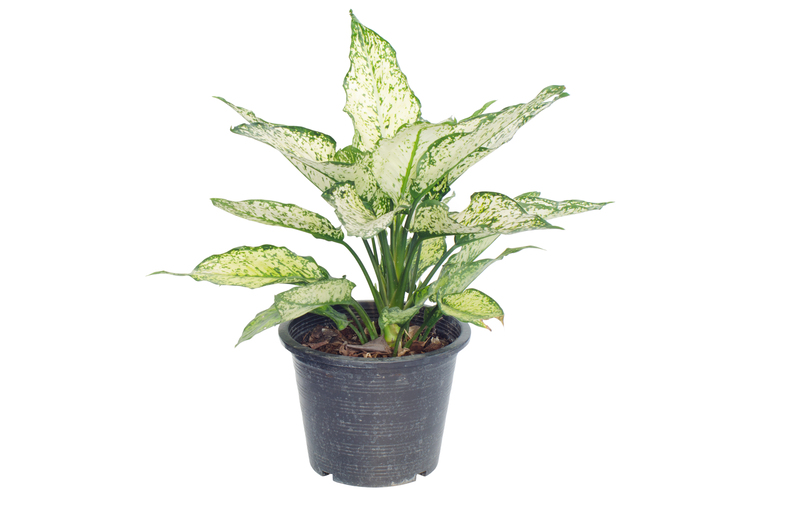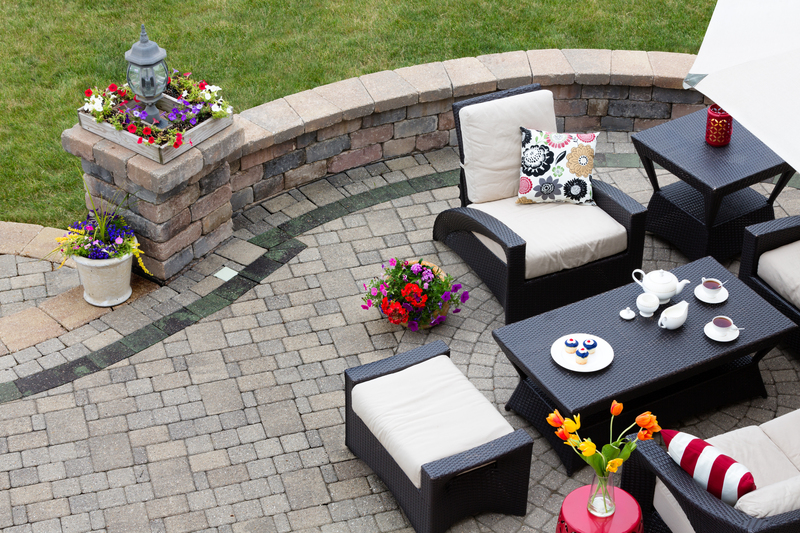Expert Advice on Orchid Care
Posted on 19/05/2025
Expert Advice on Orchid Care: A Comprehensive Guide for Healthy, Beautiful Orchids
Orchids are known for their striking appearance and unique beauty, but their care can be a mystery for many. Whether you're a beginner or looking to advance your expertise, proper orchid care is essential for healthy blooms and long-lived plants. In this in-depth guide, you'll find expert advice on orchid care, specialized tips for various species, and troubleshooting for common orchid problems. Let's unlock the secrets to mastering orchid cultivation!
Understanding Orchid Care: A Quick Overview
Orchids are one of the largest plant families in the world, with thousands of species and hybrids. Their diversity means orchid care can sometimes feel intimidating. However, most popular orchids, like Phalaenopsis (moth orchids), Cattleya, Dendrobium, and Oncidium, thrive with a few basic care principles.
- Light requirements: Vary by species, but generally, orchids like bright, filtered light.
- Watering routines: Proper watering is vital - both overwatering and underwatering can be harmful.
- Humidity and temperature: Consistency is key, mimicking orchids' native tropical environments.
- Fertilization: Regular feeding supports robust growth and blooms.
Read on for our expert guidance on orchid care, with step-by-step instructions to ensure your orchids flourish year-round.

Choosing the Right Orchid: Start with Success
Not all orchids are created equal. If you're new to caring for orchids, start with a variety known for hardiness and adaptability. The Phalaenopsis is an excellent choice, thriving in indoor environments and rewarding care with months of blooms.
Popular Beginner Orchid Varieties
- Moth Orchid (Phalaenopsis): Easy to care for, frequently blooms, tolerates lower light.
- Cattleya: Known as the "Queen of Orchids", requires bright light, blooms annually.
- Dendrobium: With many types, generally prefers moderate to bright light and regular watering.
- Oncidium: The "dancing lady", enjoys bright, indirect sunlight and humid conditions.
Consider your home's environment when choosing your orchid. More delicate species require advanced care, so beginners should start simple and expand as confidence grows.
Lighting: The Foundation of Healthy Orchids
Proper lighting is crucial for orchids. Too little light and your orchid won't bloom; too much and you risk leaf burn. Here's how to achieve the optimal light balance:
Indoor Orchid Lighting Tips
- Natural Light: Place orchids near a window with filtered light. East-facing windows are ideal.
- Avoid Direct Sun: Protect from harsh midday sun by using sheer curtains or blinds.
- Artificial Light: In low-light spaces, supplement with LED grow lights positioned 8-12 inches above the plant.
Observe your orchid's leaves: If leaves are dark green, the plant might need more light; yellowish-green or reddish leaves may indicate excess light. Adjust placement as needed for best results.
Watering Orchids: A Delicate Balance
Watering is one of the trickiest aspects of orchid care and a common culprit in plant distress. Here's how to water orchids like an expert:
How Often Should You Water Orchids?
- Check the growing medium: Let the top 1-2 inches dry out before the next watering.
- Aim for once a week during active growth, less during winter or dormancy.
- Use tepid water: Avoid chilling orchid roots with cold water.
- Water thoroughly: Allow water to drain completely - never let orchids sit in water.
Tip: Use the "finger test" or a wooden skewer - insert into the potting mix and only water when it comes out dry.
Orchid Potting: Media, Repotting, and Roots
Orchids differ from typical houseplants. Their roots need aeration and should not be buried in soil. Specialist orchid potting mixes, usually consisting of bark, sphagnum moss, or perlite, are essential.
When and How to Repot Orchids
- Every 1-2 years: Repotting refreshes the medium and avoids root rot.
- Choose the right pot: Transparent pots help monitor root health; ensure there are ample drainage holes.
- Trim dead roots: Use sterilized scissors to remove brown or mushy roots during repotting.
- Gently settle the orchid into fresh medium, packing it loosely for airflow.
Humidity and Temperature: Mimicking Nature
Orchids hail from humid forests, making proper humidity and temperature crucial for robust growth. Here's how to replicate their native environment:
Maintaining Orchid-Friendly Humidity
- Ideal humidity range: 40-70% depending on species.
- Humidity trays: Place pots on a tray filled with pebbles and water.
- Use room humidifiers to maintain consistency, especially in winter.
- Group plants: Grouping orchids increases local humidity.
Best Temperatures for Orchids
- Daytime: 65-80?F (18-27?C)
- Nighttime: 55-65?F (13-18?C)
- Sudden temperature drops can trigger blooming in some varieties.
Fertilizing Orchids: Feeding for Blooms
Regular fertilization is vital for orchids' overall health and to encourage radiant blooms. Unlike many houseplants, orchids require lighter, more frequent feeding.
How to Fertilize Orchids
- Use a balanced fertilizer (20-20-20 or orchid-specific formulas) diluted to half or quarter strength.
- Apply every 2-3 weeks during active growth.
- Flush out salts: Water the orchid thoroughly once a month to prevent salt buildup in the potting medium.
- Reduce or stop fertilizing during dormancy, depending on species.
Common Orchid Problems and Solutions
Even with expert care, orchids may encounter issues. Here's how to recognize and address common orchid challenges:
- Yellow leaves: Usually a sign of overwatering or poor drainage. Let the potting mix dry out more between waterings.
- No blooms: May be caused by insufficient light, old potting medium, or too much nitrogen fertilizer.
- Wilting or shriveled leaves: Indicates underwatering or root issues - check roots for rot or dehydration.
- Leaf spots or mold: Improve air circulation, avoid water splashing on leaves, and treat with a safe fungicide if needed.
- Pests (aphids, scale, mealybugs): Remove manually or treat with diluted insecticidal soap - quarantine affected plants.
Expert Tips for Blooming Success
If you want your orchids to blossom and thrive season after season, follow these expert strategies:
- Create a seasonal cycle: Some orchids need a distinct change in temperature or light to trigger blooming. Research your variety's specific needs.
- Support flower spikes: Use stakes to gently prop up flower stems, preventing breakage.
- Prune after blooming: Remove spent flowers and trim spikes to just above a healthy node to encourage reblooming.
- Rotate plants: Turn your orchid regularly to ensure even light exposure and symmetrical growth.
- Keep records: Note watering, fertilizing, and blooming dates. This helps you fine-tune your care over time.
Special Care for Unique Orchid Varieties
Some orchids require special attention:
- Phalaenopsis: Avoid exposing to temperatures below 60?F; water when roots turn silvery-white.
- Cattleya: Needs brighter light; allow potting mix to dry between waterings.
- Vanda: Prefers very high humidity and daily watering, with roots often grown in baskets.
- Paphiopedilum: Needs more moisture; never let the potting mix dry out completely.

Frequently Asked Questions on Orchid Care
How do you revive a dying orchid?
Reviving orchids involves removing any diseased or dead roots, repotting in fresh medium, and placing the plant in a warm, humid environment with indirect light. Reduce watering until you see new root growth.
How long do orchids live?
With proper orchid care, many orchids can live 10-20 years or more! Regular repotting, correct watering, and consistent feeding are key to long-lived orchids.
Why won't my orchid bloom again?
Orchids typically need a period of rest after blooming and may require specific changes in light, temperature, or feeding to initiate the next bloom cycle. Check your species' requirements for triggering rebloom.
Can orchids be grown outdoors?
Yes, but only in climates that mimic their native habitat: warm, humid, and frost-free. In cooler climates, orchids can summer outdoors in the shade but must be brought inside before temperatures drop.
Conclusion: Mastering Orchid Care for Years of Blooms
Growing orchids doesn't have to be intimidating. With the right knowledge, anyone can cultivate the captivating beauty of orchids at home. Start by choosing resilient varieties, master the basics of light and water, and fine-tune your approach as your confidence grows. By following this comprehensive, expert advice on orchid care, you'll enjoy healthy plants and spectacular blooms year after year.
Share your own orchid care tips or questions below--happy growing!



